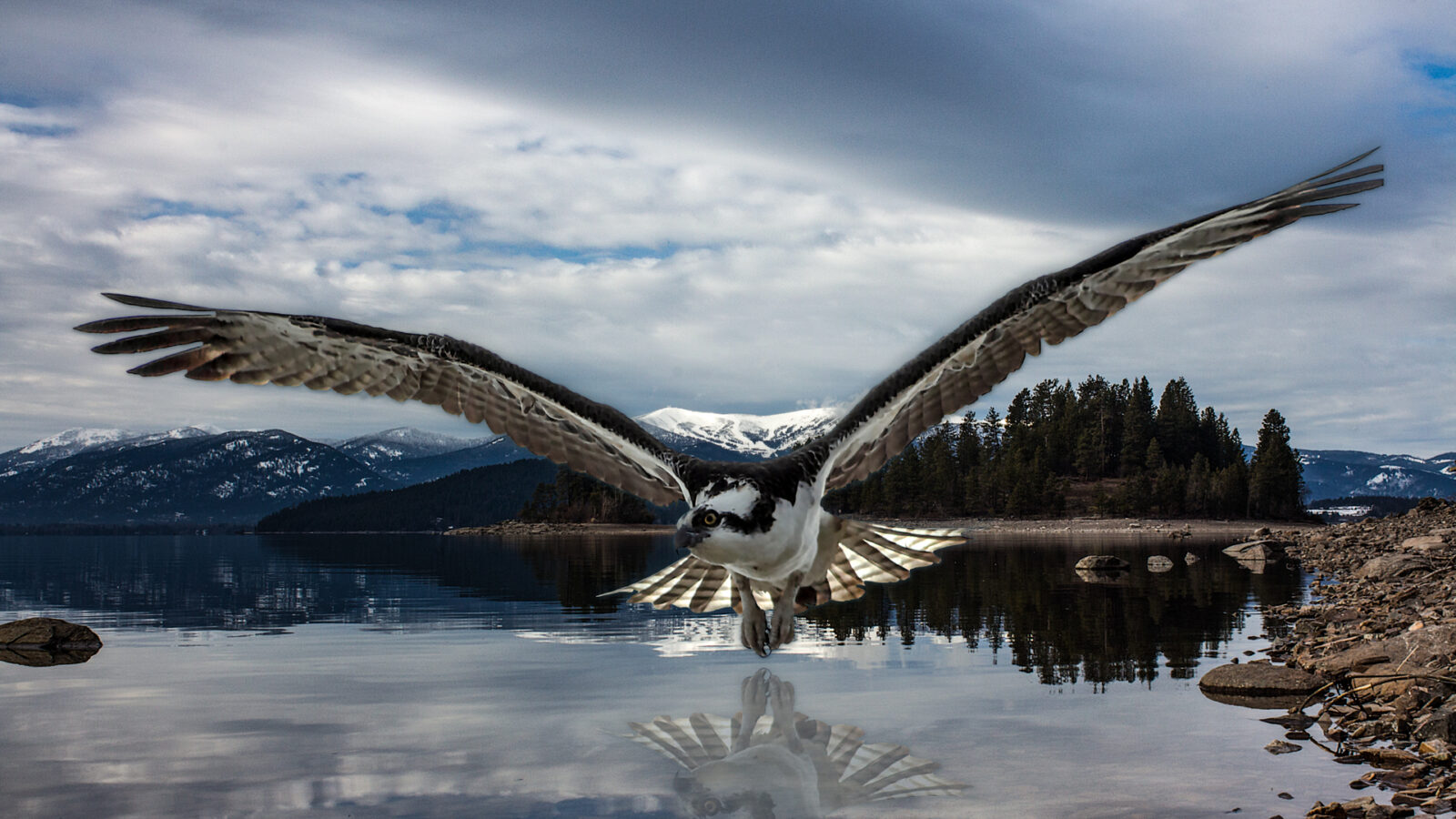VIEW ALL THE SHOTS.
Click image below to see full size.
[jig_vc]
One of my favorite sights is seeing the white and black osprey flying across a deep blue sky broken by white fair weather cumulus clouds. It’s just beautiful. When you see an osprey circling above, take a close look at its talons. You may just find that it’s showing an unlucky fish what it is like to fly above the trees.
Also known as the “fish hawk,” ospreys are raptors that are well adapted for fishing. They have long legs and large feet with specialized barbs on the pads, hooked talons, and a reversible outer toe that allows them to easily grasp fish with two toes pointing front and two pointing rear. They have an oily waterproof coating on their wings, and they can close their nostrils when they plunge into the water. They have slender bodies and long wings that are bent at the ‘wrist’. Their strong wings give them extra lift to fly up and out of the water with a heavy fish. They have a black bill with a sharp hook for eating fish.
They are brown above and white below. The undersides of their wings are white with a dark patch at the wrists. Ospreys have yellow eyes and white heads with a distinctive black eye stripe that sets them apart from eagles, for which they are commonly mistaken. The female differs from the male in having a more defined ‘necklace’ of brown feathers across her throat.
A few interesting facts about the Osprey:
- Osprey are sometimes known as sea hawks, fish eagles or fish hawks
- The Osprey has a worldwide distribution and is found in temperate and tropical regions of all continents except Antarctica.
- Fish make up 99% of the Osprey’s diet. Occasionally, the Osprey may prey on rodents, rabbits, hares, amphibians, other birds, and small reptiles
- The Osprey and Owls are the only raptors whose outer toe is reversible, allowing them to grasp their prey with two toes in front and two behind.
- Osprey typically take fish weighing 5–10 oz and about 10–14 in in length, but the weight can range from 2–68 oz. Virtually any type of fish in that size range are taken.
- The Osprey is particularly well adapted for catching fish. They have reversible outer toes, sharp spicules on the underside of the toes, closable nostrils to keep out water during dives, and backwards-facing scales on the talons which act as barbs to help hold its catch.
- Ospreys’ hunting success rate is quite high and has been reported to range from 50% to 80% for adults.
- The typical lifespan of an Osprey is 7–10 years, though rarely individuals can grow to be as old as 20–25 years. The oldest European wild Osprey on record lived to be over thirty years of age
Definatly an amazing bird to watch as it is out fishing and the reason I call this one "Osprey - the fisher king". I hope you enjoy the main picture and these snapshots of this fantastic creature.
Have a great day!!
[/vc_column][/vc_row][/vc_section]
